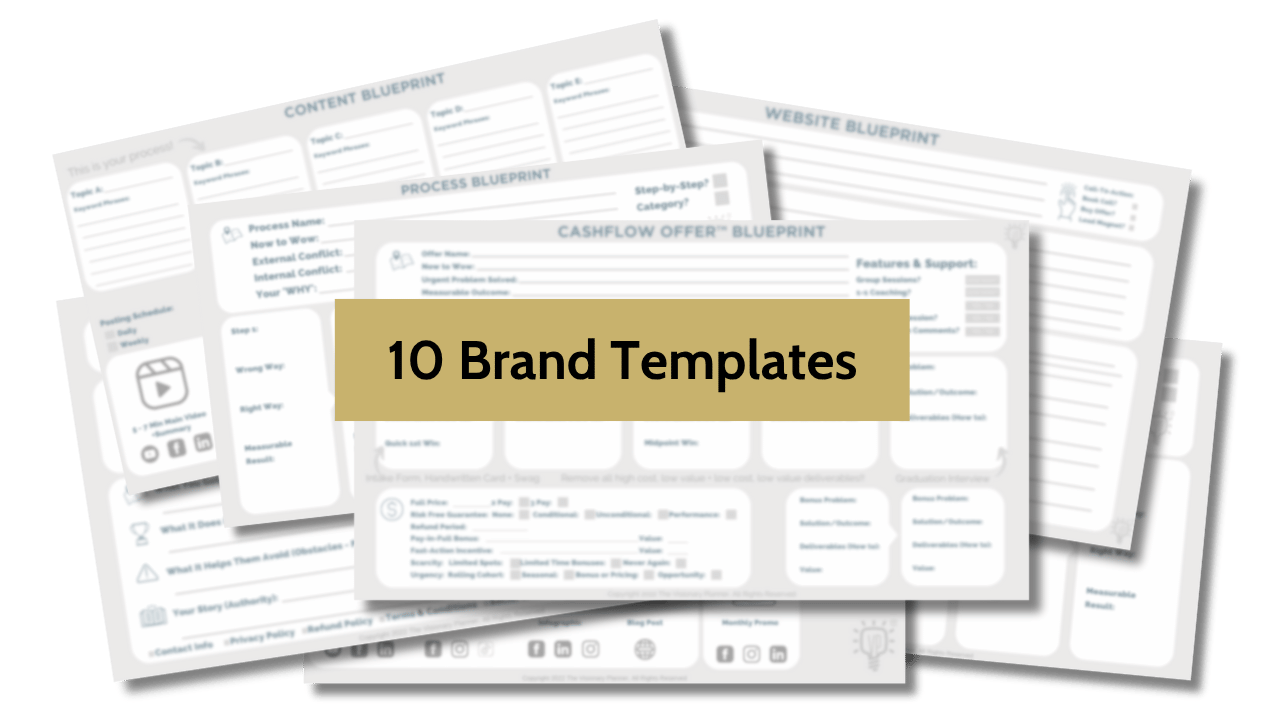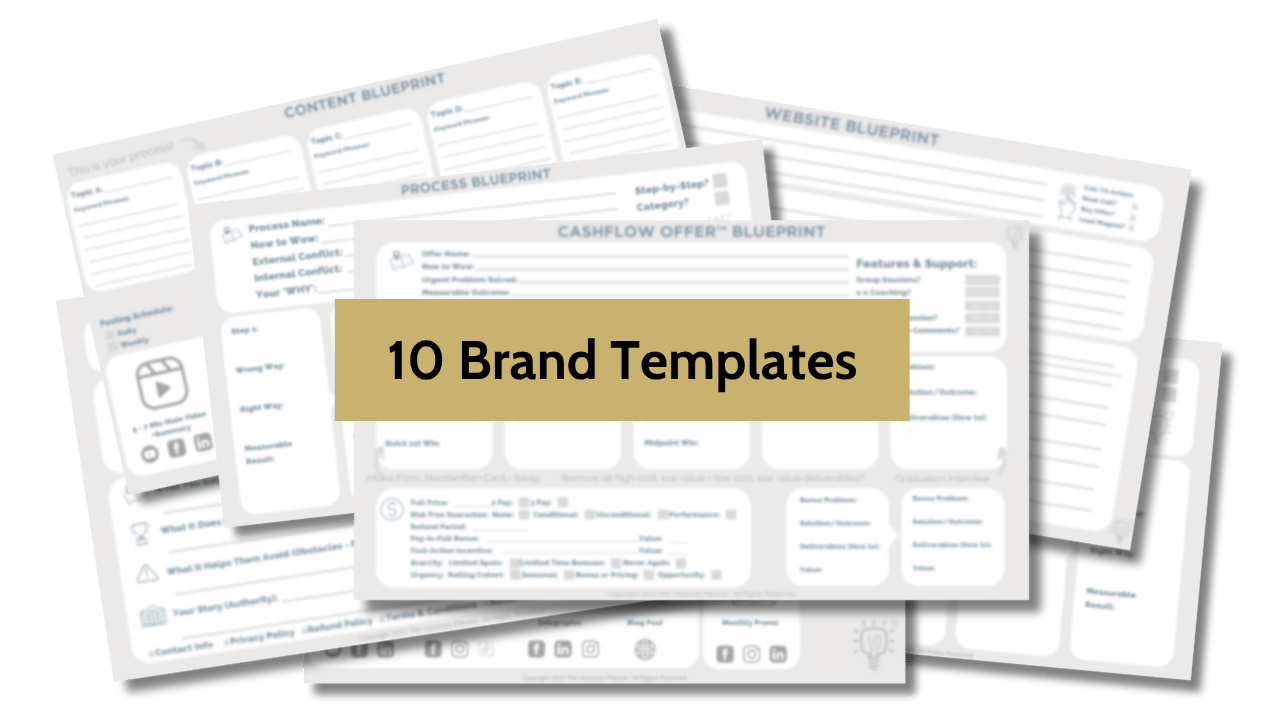How To Make A Website in 6 Simple Steps
Apr 30, 2018
Technically a website is a series of files that exist on a computer. The files contain text and graphics that are programmed to display a certain way on various types of screens. These are usually desktop computers or mobile devices.
Think of a website as a physical location of a business. Like a store. What does it take to open and operate a store?
Offline (Physical) Business Presence
First you need a Business Name for your new business.
Then you need to rent a location which will give you a physical address (so mail can arrive and your Audience and Guests can find you). By the way, we define anyone who is interested in your Brand as your ‘Audience’. But once a member of your Audience buys they become a ‘Guest’. This terminology feels a little more pleasant and less sterile than ‘client’ or ‘customer’.
After you have your business idea and location (with its physical address) it’s time to get your location ready!
You’ll need to do Interior Design. That means you’ll need to fill it up your locations with merchandise, paint the walls, add some furniture and basically get it ready for your launch.
You’ll also need to advertise your new location and find a way to follow up with your Audience (so you can try to sell them on your products or services) or follow up with your Guests (so you can make sure your products and services are helping them, to find out what other ways you can help them and to get feedback to improve your quality and customer support).
Opening a physical location sounds pretty straight forward right?
Online Business Presence
Now let’s look at the same process online…
1) Domain Name
First you need to select your Brand’s name.
Once you have a name you’ll need to purchase a domain name. You’ll do this from a service called a Registrar. Companies like GoDaddy or Namecheap let you buy domain names from them. However you will never own the domain name. You merely are able to license it for a set number of years.
You have the option to license this indefinitely, but you can never buy it outright. If you fail to make your yearly payments your domain name will expire and someone else can buy it. The Internet Corporation for Assigned Names and Numbers (ICANN) are the ones you will be licensing your domain name from.
A word of caution…
ICANN will regularly require your contact info. Not doing this is illegal and they will shut your site down. All you need to do is check your Hosting Service once a year and make sure your contact details are up to date.
This includes making sure they have your most current email address so they can contact you if they have questions. One of our ex-client’s site was shut down by ICANN because she didn’t update her info. Never fear, her site was turned back on within a few days of her submitting the requested info.
However a domain name is just that…a name. It won’t do anything for you. It doesn’t exist…yet.
If we go back to our physical store location example, after we have our Brand’s Name chosen, we need to find a physical location to open our store at.
2) Domain Hosting
Online, the equivalent of this is hiring a hosting company to host your site.
What is a host? It’s simply a computer where your site’s files will be located. This computer is called a Server. Think of the hosting companies server as the physical location of your store.
That means every time someone searches for your site the search engines will redirect them to your site’s host’s server. Most registrars (where you bought your URL) also offer hosting, so often these may be the same company.
Hosting comes in different qualities. You can share a computer with other websites (this is the cheapest option and called Shared Hosting) or you can get your own server.
Having your own server is called a Virtual Private Server, or VPS. The highest level is called a Dedicated Server. A VPS server is faster than Shared Hosting, but you still have to share your server with other businesses. If you want your own server you’d want it be Dedicated.
If we want to make the analogy of a having a store, shared hosting is like having a booth at a market next to other vendors. Having a VPS is like renting your own store in someone else’s building. Having a Dedicated Server is like having your own stand-alone building. Big pimp style!
If you’re just starting your site, you’ll want to go with Shared Hosting. There is no reason to spend extra money until you need to scale your ‘store’ up.
3) Website URL
After you have your hosting you’ll get your website address, or URL. This is the same as your store getting a physical address. Like 123 Main Street. When you buy your URL it’ll be something like YourSite.com. But once the site is hosted it becomes http://YourSite.com.
If you have a SSL Certificate (this is a file that encrypts all your site’s data and is required if you’ll be processing credit cards) then your site would start with https, instead of just Http. Now you know what that ’S’ stands for!
By the way, URL stands for Uniform Resource Locator. It’s basically a programming code that helps computers connect with each other. Don’t you just love getting useless info?
At this point you have your domain’s name, your hosting company so your site’s files can be hosted, and a URL for people to find your site.
4) Wordpress Site
But you still don’t have a site people can visit!
Imagine you just rented a storefront. You now have an address for your store. But can you invite customers to come shop? Hell no!
Why?
Because your store would be completely empty!
You would need to hire an interior designer. They would add furniture, cash registers, help display the merchandise, make sure you have working bathrooms, lighting and power.
For your site, you would need to first need to figure out what website software you’d want to use. There are a few options, but the most popular, and the one we suggest, is Wordpress.
What is Wordpress?
It’s simply a series of programming code that organizes and displays all the content you’d want to have on your site.
Once you have your hosting you can easily have Wordpress installed on your site. At this point you’ll have a generic copy of Wordpress that Visitors can see when they visit your URL. Think of this process as your store’s landlord giving you the keys to your new empty store.
Now its time to hire your Interior Designer!
5) Wordpress Theme
The online equivalent is getting a Wordpress Theme and then either stylizing it yourself (something that is a total waste of your time as the learning curve is steep) or hiring a Web Designer to do this for you.
If you’re wondering, Wordpress Themes are fairly cheap and easy to install.
The theme is simply a series of files that tell Wordpress how you want it to look. In our analogy of your site being like a store, the Wordpress Theme is like hiring a construction crew to come in and build your store out.
When you buy a Wordpress Theme you’re just buying a license. You won’t own it but will have the rights to use if for your one site. We advise you to read your license agreement so you don’t break any laws!
After you have the Wordpress Theme installed you, or your designer, will want to start adding content and Visual Branding. Content includes photos, text and articles. Visual Branding includes picking your Brand Fonts, Brand Colors and adding your Brand Logo.
By the way, after seeing our clients and friends struggle to get a decent looking site built, so we offer a website building service. We'll coach you on your marketing funnel and branding, then build you a gorgeous custom site. It's not cheap (we put a lot of love into each site we create), yet if you're ready to finally get a gorgeous site (and have us deal with the graphics, tech and headaches), then click here to set a call with us.
Up until now, setting up your site is a fairly easy experience. You can easily outsource all of this. Your time is better spent growing your business, not mastering how to perform a bunch of technical tasks that will obsolete the next time each piece of software gets their regular updates.
It’s your job to understand the basic elements of running a site (like renewing your domain name, making sure your hosting plan has been paid for and knowing that your Wordpress site is updated and being backed up).
Once your physical store is designed, merchandise is on the shelves and your Team is trained, its time to open your doors and let people in!
6) Advertising
But an Audience won’t magically appear without you doing some Advertising.
Your site is no different.
Once you have your site set up, you’ll want to advertise it. Advertising a physical location is the same as advertising a site. The exception is that a site can very easily capture the contact details of Visitors so you can follow up with them and build a relationship. For this reason its far less risky to open an online business than a physical one.
A physical business will require thousands in rent, interior design, insurance, employees and merchandise.
Whereas an online business can be up and running with a much smaller investment. Typically it costs about $4000-$24,000 to get your site and Brand up and running. You can do it cheaper if you try to do it all yourself, but that’s time you’re spending building your Brand instead of growing it!
Wrap Up:
Let’s recap the big ideas we’ve talked about here so you’re clear on how a real location is like a website:
- A real location’s Business Name is the same as your Domain Name.
- Location is when you have a Hosting Company to host your Domain Name.
- Physical Address is the same as a URL. This lets people find your site online.
- A physical space, like a Store, is like having a physical place online like a Wordpress Site.
- Interior Design is the same as having a Wordpress Theme and Great Design.
- Advertising for a physical store is the same as advertising online.
So what is complex when creating a site? Planning it!
- What content will be on your site?
- What type of images will be on it?
- What is your Brand Story?
- How do you plan to capture the emails of your Audience?
- How do you plan to follow up with them?
- What Treasures (products and services) will you sell from your site?
- What content (blog posts and videos) will you create?
All of this requires a lot of planning, thought and time to build.
For example, it’s most likely you’ll want a professional photo of you on your homepage. And you’ll want additional pics of you for your About Page that show you doing exciting things. All of this requires a bit of thought. The sites that generate repeated and consistent revenue for their owners are the ones where great thought and planning has been put into them.
Unlock Our Brand Vault (Free)
Get instant access to the 10 brand tools we use with our $4,200 clients. These frameworks have helped B2B leaders land premium clients, get featured on top podcasts, and clarify messaging that converts, without overhauling their website.
We hate SPAM. We will never sell your information, for any reason.




